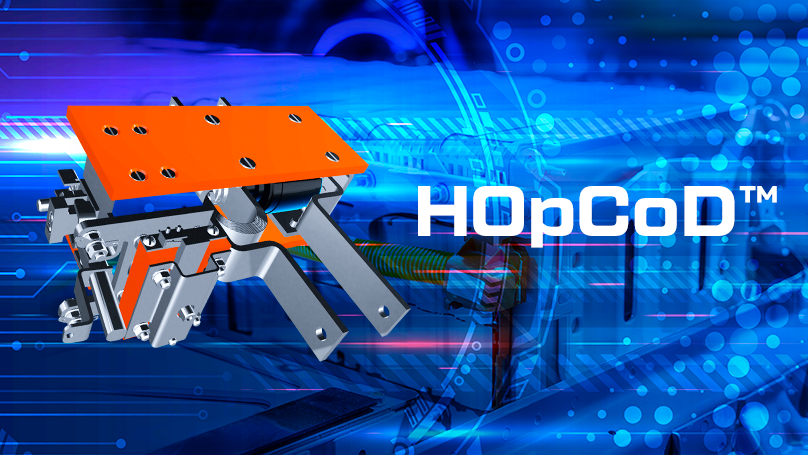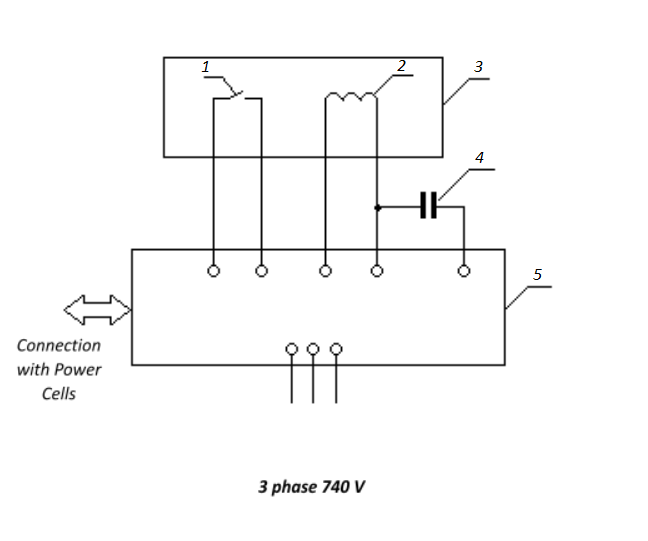
HOpCoD™ technology or bypassing the Triol power cells.
Many manufacturers of medium-voltage cascaded multi-level frequency drives have implemented a bypass function for the power cell. The benefit of this feature is obvious, in that it keeps the product running until a planned shutdown for maintenance and repair is carried out.
Bypass, as a hardware and software system, has evolved in several directions and is not only an element of physical removal from the power circuit of a faulty element, but also compensation for the loss of output voltage related to the bypassing of the failed power cell.
Technical solutions for bypassing power cells
Today there are five most popular technologies for bypassing power cells: electronic thyristor bypass, electronic IGBT bypass, mechanical classical bypass, mechanical bypass using squib, and HOpCoD™ (high-operated commutation device). The main advantages and disadvantages can be found in the table below.
Table 1: Technical characteristics of the main power cell bypass topologies

The table shows a list of technologies that are currently used to manufacture power bypass systems, the entire list of alarms that require bypassing of the power cell, the bypass activation time, and the number of bypass activations performed by the bypass system. The table also marks () the available list of alarms for each technology.
As can be seen from the table, bypass with HOpCoD™ technology is devoid of any disadvantages that impair the functionality of the frequency inverter depending on the fault that occurs. HOpCoD™ not only makes it possible to handle all known faults in the power cell to be bypassed, but also does so quickly and repeatedly!
One of the critical parameters affecting the performance of the frequency drive is the bypass time. If the bypass time exceeds 4–5 ms, there is a possibility of severe damage to the power cell, up to and including explosion and damage to neighboring cells, due to overvoltage in the DC link. For slow bypasses, frequency drive algorithms provide for temporary removal of the output voltage from the motor, subsequent bypassing of the damaged power cell, picking up the motor on coasting, and bringing it back to the set frequency. In a number of cases, this mode, with its associated loss of rotation and torque, is unacceptable, which makes such a bypassing system absolutely useless in terms of ensuring continuity of the technological process.
It is also not unreasonable to be able to quickly debounce the power cell, especially when it comes to false triggering that is not associated with a loss of power cell functionality. This is not possible with bypasses powered by the pyro cartridge. Its triggering will require a long stop of the frequency drive and extraction of the cell with the bypass triggered. This is not always convenient or acceptable, so a fast bypass release of the power cell is a competitive advantage of HOpCoD™ bypass technology.
So, what is the secret behind the success of HOpCoD™ technology? And why does a bypass made with another technology lose out to it? In fact, the biggest secret is that Triol has studied in depth all known bypass technologies, identified their strengths and weaknesses, and developed its own technical solution devoid of the weaknesses of competitors, but with the maximum of their advantages!
The main advantages of a bypass based on HOpCoD™ include:
- Handles all possible combinations of power cell faults;
- High response time – on the order of 3.6 ms;
- No torque loss on the shaft and no long recovery time after bypassing;
- No power loss – no long recovery time after bypass operation;
- Reusability without removing the power cell.
In support of the above, here is a timing diagram of a bypass fault in a power cell with HOpCoD™ technology.

Fig.1 Timing diagram of the output voltage of a multi-level frequency drive when the HOpCoD™ bypass is triggered at 45Hz.
As can be seen from the diagram above, only at the moment of bypassing is there a slight reduction in the shape of the output voltage, the duration of which is an order of magnitude shorter than its period. This not only makes it possible to maintain process continuity, but also, in some cases, to avoid losing torque on the motor shaft and its speed. This makes the HOpCoD™ bypass a highly valued and requested feature for customers for whom continuity of operation is critical!
The appearance of a power cell with the HOpCoD™ bypass module differs slightly from a cell without such a module.

Fig. 2 Front panel of the HOpCoD™ bypass power cell
The front panel of the power cell with bypass contains elements that distinguish this type of cell from standard cells:
- bypass status indicator;
- information sticker containing information on bypass operation;
- socket for the bypass lever.
How is HOpCoD™ arranged?
HOpCoD™ is an advanced power cell bypass technology developed by TRIOL Corporation that combines the advantages of electronic bypass, mechanical classical and mechanical bypass with pyrotechnic activation. Let's take a look at its design and principle of operation.

1 - Vacuum arc quenching chamber power contact position limit switch; 2 - solenoid; 3 - bypass unit; 4 - storage capacitor; 5 - electronic bypass control unit.
Figure 3. HOpCoD™ bypass wiring diagram
Thanks to the ingenious technical solution of implementing a fast fault detection and quick closure method for the vacuum chamber, a bypass with HOpCoD™ technology is devoid of any technical or user-specific weaknesses, and the response time of 3.6 ms is sufficient for timely blocking of the power cell components from inadmissible voltage levels in the DC link, during a power cell fault, in the operating frequency range.

Figure 4. External appearance of the bypass mechanicals with HOpCoD™ technology.
Conclusion
Triol Corporation works to improve technical solutions in the field of variable frequency drives, deeply analyzing advanced solutions in the field and bringing innovations aimed at improving the quality of products for consumers of products, making them not only unique but also demanded in the market!
HOpCoD™ is one of Triol’s original technologies. Although it shares some similarities with previously developed technologies, it has some important differences that set Triol products apart from the competition!
subscribe.el.title
- Product news
- Events
- Discounts
 1(405)6157755 (Business)
1(405)6157755 (Business)


 Google
Google







